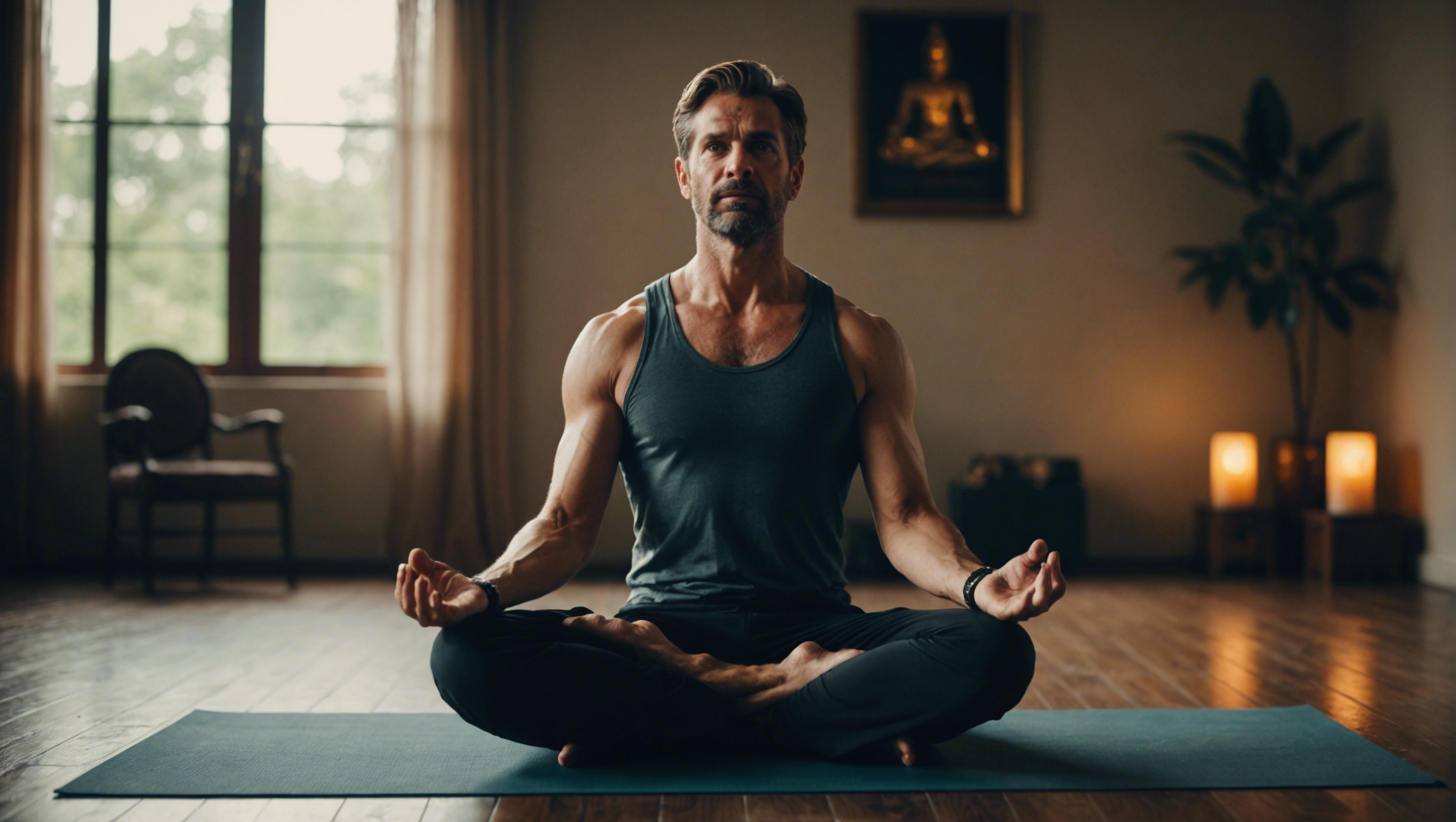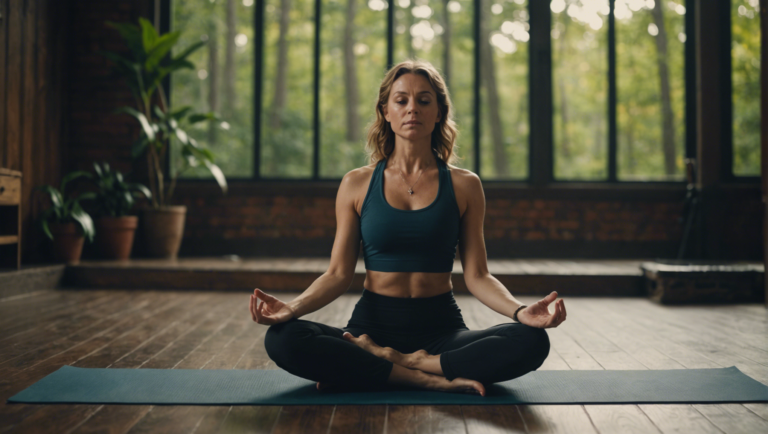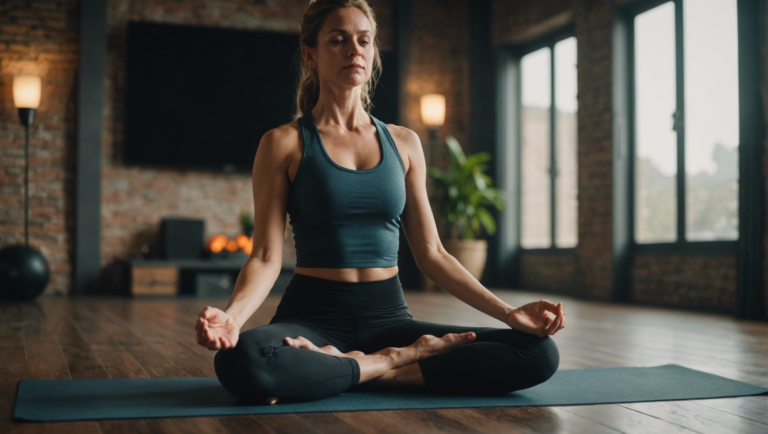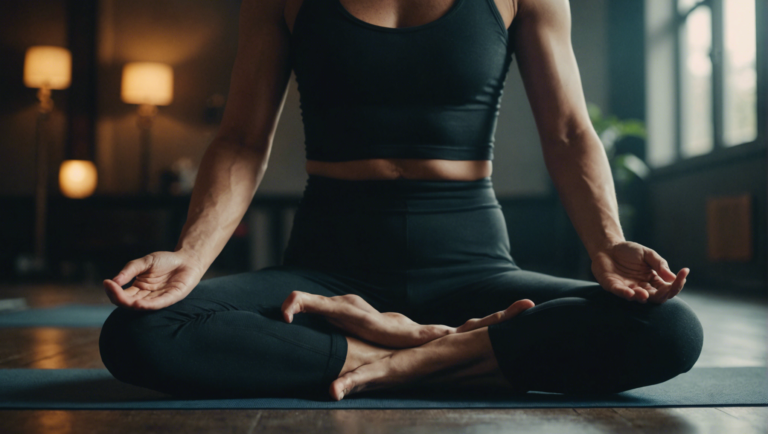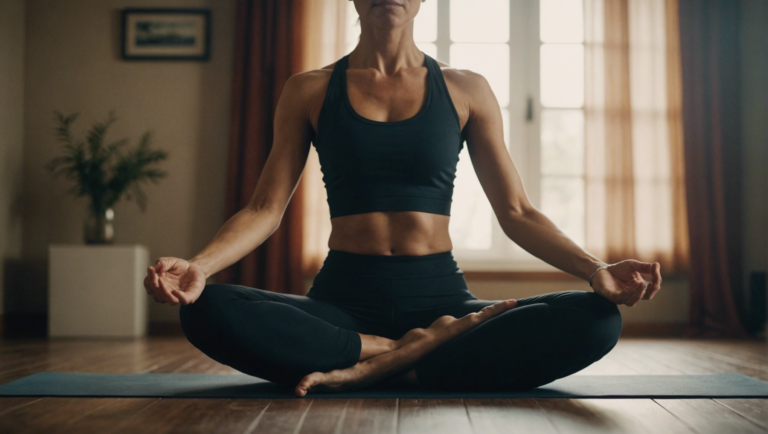Discovering The King Of Yoga: A Comprehensive Guide
The Enigmatic Quest for the King of Yoga: Unveiling Its Meaning and Origin
Embarking on a spiritual journey often leads many to the ancient practice of yoga, an endeavor that uncovers layers of physical, mental, and spiritual well-being. Central to this exploration is the pursuit of understanding the paramount branch of yoga, often hailed as the "King of Yoga". This timeless quest reveals not only the depth and breadth of yoga’s offerings but also illuminates the path to ultimate enlightenment and union.
The Essence and Definition of the King of Yoga
At its core, the essence of the King of Yoga transcends mere physical postures and breath control; it is an intricate tapestry woven from the threads of self-realization and oneness with the universe. This supreme form of yoga illuminates the path to inner peace through disciplined practice, cultivating a profound connection between mind, body, and spirit.
Historical Roots: Unearthing Its Origins
The roots of the King of Yoga stretch back millennia, finding mention in ancient scriptures and texts that form the bedrock of yogic philosophy. Scholars and sages have proffered interpretations, each contributing to a rich tapestry of understanding. The Bhagavad Gita, a seminal text in yogic and Hindu philosophy, plays a pivotal role in elucidating the concept, presenting it as a synthesis of knowledge, devotion, and disciplined action.
Key Principles and Practices
The practice of the King of Yoga is grounded in several key principles that guide the practitioner on their quest for enlightenment. These include:
- Self-Realization: Recognizing the true self beyond the physical and mental layers.
- Discipline and Dedication: Consistent practice with earnest effort and sincere devotion.
- Unity with the Divine: Cultivating a connection to the universal conscience or the divine through meditation and mantra chanting.
The Significance in Contemporary Practice
In today’s fast-paced world, the significance of the King of Yoga remains undiminished. As individuals seek solace from the stress and disconnection of modern life, this ancient practice offers a beacon of hope and serenity. It emphasizes mindfulness, compassion, and the pursuit of a higher consciousness, providing a counterbalance to the material-focused outlook prevalent in our society.
The Path Forward: Integrating into Modern Life
Integrating the principles of the King of Yoga into daily life necessitates a commitment to practice and a willingness to delve deep into one’s own psyche. It encourages turning inwards for strength and guidance, advocating for a life led with purpose and mindfulness. Modern practitioners find that even simple acts of breathing consciously or meditating for a few minutes can imbue their days with a sense of calm and clarity, deeply resonating with the teachings of the King of Yoga.
Navigating Challenges and Misconceptions
While the journey towards mastering the King of Yoga is enriching, it is not devoid of challenges. Common misconceptions, such as equating yoga solely with physical fitness or underestimating the discipline required, can deter progress. Overcoming these requires education and persistence, as well as seeking guidance from experienced practitioners who embody the essence of this path.
Charting Your Path: Practical Steps to Begin
For those drawn to the exploration of the King of Yoga, starting may seem daunting. However, small, deliberate steps can lead to profound transformations. Begin with:
- Educating Yourself: Dive into the texts and teachings that elaborate on its principles.
- Seeking a Mentor: Find a teacher who practices with authenticity and depth.
- Daily Practice: Dedicate a few moments each day to meditation, reflection, or yoga postures, gradually building your practice.
The quest for understanding and mastering the King of Yoga is both an inward journey and an outward expression of growth and enlightenment. In unraveling the enigma of its essence and origins, one not only discovers the depths of yogic philosophy but also embarks on a transformative path toward self-discovery and ultimate liberation. This ancient practice, revered for centuries, continues to offer profound insights and promises a journey replete with spiritual awakening and personal evolution.
The Historical Roots and Evolution of Yoga: From Ancient Practice to Global Phenomenon
The journey of yoga, from its inception in the mist-shrouded depths of ancient history to its status as a global phenomenon, is a riveting saga of spiritual evolution and cultural adoption. Yoga, a practice that originated in the Indus-Sarasvati civilization in Northern India over 5,000 years ago, has transcended its origins, becoming a linchpin in the dialogue of holistic health and spiritual well-being across the world.
The Ancient Foundations of Yoga
The ancient foundations of yoga are steeped in a rich tapestry of historical texts and practices, with the earliest references found in the Vedas, the oldest sacred texts of Hinduism. These references delineate a spiritual practice that was concerned primarily with spiritual enlightenment and the discipline of the mind and body. The cornerstone of yoga philosophy was laid in these ancient texts, which introduced yoga as a method for achieving moksha, liberation from the cycle of birth and death.
The Bhagavad Gita and the Yoga Sutras of Patanjali, composed later, elaborated on these concepts, introducing the ethical tenets and practices that form the core of yoga today. Patanjali’s Yoga Sutras, in particular, systematized yoga into an eight-limbed path (Ashtanga) leading to samadhi, or enlightenment. These texts underscored yoga as a profound discipline for spiritual growth and self-realization.
The Evolution of Yoga in the Medieval Era
The medieval era witnessed a flourishing of diverse yogic traditions. Tantra Yoga, emphasizing the transcendence through the physical body, and Bhakti Yoga, focusing on devotion, emerged during this period. These traditions introduced a more esoteric aspect to yoga, expanding its scope beyond the rigidity of earlier practices. This era also saw the emergence of Hatha Yoga, which emphasized the physical aspects of yoga practices, laying the groundwork for the various forms of yoga that are popular worldwide today.
Yoga Crosses Oceans: The Western Adoption
The late 19th and early 20th centuries marked a pivotal era as yoga began to cross oceans, finding a new home in the West. Pioneers like Swami Vivekananda played a crucial role in introducing yoga to Western audiences. His landmark speech at the Parliament of the World’s Religions in Chicago in 1893 captured the imagination of the Western world, leading to a growing interest in Indian spirituality and yoga.
The subsequent decades saw yoga’s transformation from a predominantly spiritual practice to a popular form of physical exercise. Teachers like B.K.S. Iyengar, T.K.V. Desikachar, and Pattabhi Jois developed and popularized styles of yoga that emphasized physical postures (asanas) and breath control (pranayama), making yoga accessible and appealing to a global audience.
The Global Yoga Phenomenon
Today, yoga has burgeoned into a global phenomenon, with millions of practitioners and yoga studios dotted across every continent. The United Nations’ declaration of June 21 as the International Day of Yoga in 2015 is a testament to its widespread popularity and the recognition of its profound benefits.
Modern yoga seamlessly blends the ancient with the contemporary, incorporating elements of meditation, mindfulness, and physical fitness. It caters to a diverse range of purposes, from spiritual enlightenment to physical health, stress relief, and emotional well-being. This adaptability and universal appeal have cemented yoga’s status as a cherished global heritage.
Yoga’s Future Trajectory
As yoga continues to evolve, it sparks a dialogue between tradition and innovation. The proliferation of styles like Power Yoga, Kundalini Yoga, and AcroYoga, alongside traditional forms, reflects the dynamic nature of yoga. This evolution is a testament to yoga’s enduring relevance and its capacity to adapt to the needs of different times and cultures.
The historical roots and evolution of yoga from an ancient practice to a global phenomenon underscore its universal appeal and timeless wisdom. Yoga’s journey mirrors humanity’s eternal quest for meaning, health, and harmony, making it a true global treasure.
The Different Paths of Yoga: A Comparative Exploration
Yoga, a spiritual and ascetic discipline, involves more than just physical postures—it’s a comprehensive journey involving the mind, body, and soul. Rooted in ancient Indian philosophy, yoga transcends mere exercise, offering paths that cater to different needs, aspirations, and personalities. This exploration will delve into the various paths of yoga, illustrating how each offers a unique road to self-discovery and enlightenment.
Exploring the Majesty of Hatha Yoga: The Physical Path
Hatha Yoga is often the gateway for many into the vast world of yoga. This path focuses on physical techniques, primarily asanas (postures) and pranayama (breath control), to prepare the body for deeper spiritual practices. It’s characterized by its slower pace, allowing practitioners to immerse themselves in each posture. Hatha Yoga is not just about physical endurance or flexibility; it’s a method to awaken and harmonize the subtle energies within the body, paving the way for higher meditation.
Bhakti Yoga: The Path of Devotion
Bhakti Yoga, known as the path of devotion, uncovers the power of love and surrender. This path is for those who are moved by the heart and seek a personal relationship with the divine. Practitioners use prayer, chanting, and singing of mantras to express their devotion and open their hearts. Through Bhakti, the yogi sees the divine in all beings and things, leading to a profound state of bliss and love that transcends worldly attachments.
The Intellectual Journey Through Jnana Yoga
Jnana Yoga is the path of knowledge or wisdom. It’s suited for the intellectually inclined—those who are drawn to meditation through contemplation and reflection. This rigorous path demands a deep exploration of oneself and the nature of reality through study and meditation. Jnana yogis use the mind to inquire into its own nature, embracing self-study and philosophical exploration to transcend the limitations of the ego and attain liberation.
Karma Yoga: The Path of Selfless Service
Karma Yoga, the yoga of action, teaches that selfless service leads to spiritual growth. By acting without attachment to the fruits of actions, Karma Yogis dedicate their deeds to the divine, purifying the heart and reducing egoism. This path appeals to those who find joy and fulfillment in helping others, emphasizing that through selfless service, one can achieve a state of unity with all of creation.
Raja Yoga: The Royal Path
Raja Yoga is often referred to as the "royal path" to self-realization, encompassing elements of all yoga paths but with a particular focus on meditation. Also known as Ashtanga Yoga, it outlines an eight-limbed approach that guides practitioners from moral restraint to achieving a state of eternal bliss. This path is comprehensive, integrating physical postures, ethical standards, breath control, and meditation, leading to the ultimate goal of yoga: enlightenment.
The Emerging Fusion of Modern Yoga Paths
In the contemporary yoga landscape, there’s a growing trend of blending these traditional paths to suit individual needs and lifestyles. Modern practitioners often combine aspects of Hatha Yoga with the devotion of Bhakti, the disciplined action of Karma, and the meditative focus of Raja Yoga, creating a holistic practice that addresses all facets of human experience. This fusion of paths reflects the adaptability and inclusiveness of yoga, making it accessible and relevant to today’s seekers.
The diverse paths of yoga offer varied approaches to reaching a common destination—self-realization and unity with the divine. Whether through the physicality of Hatha, the devotion of Bhakti, the wisdom of Jnana, the selflessness of Karma, or the meditative depth of Raja, each path invites exploration and discovery. By understanding and respecting the unique attributes of each path, practitioners can embark on a personal journey that not only transforms the individual but also contributes to the collective elevation of humanity.
The Transformative Power of Yoga: Personal Accounts and Scientific Studies
Yoga, often perceived as just a series of postures or asanas, transcends the physical realm to impact the mental, emotional, and spiritual aspects of an individual’s life. By weaving together personal experiences with rigorous scientific studies, we uncover the multifaceted effects that yoga has on one’s well-being, offering a comprehensive perspective on its transformative power.
Personal Narratives Shed Light on Yoga’s Impact
Numerous individuals across the globe have turned to yoga as a sanctuary, seeking solace and strength within its disciplined yet nurturing embrace. These personal accounts are not just stories of physical flexibility and strength; they are profound testimonies of emotional healing, mental clarity, and spiritual awakening. For many, yoga has been the catalyst for profound life changes, facilitating recovery from illness, alleviating stress and anxiety, enhancing mental focus, and fostering a sense of inner peace. These narratives serve as qualitative evidence of yoga’s power to heal and transform.
Scientific Research Validates Yoga’s Benefits
Parallel to these heartfelt stories are the findings from numerous scientific studies that investigate the effects of yoga on the human body and mind. Research in fields such as psychology, neurology, and medicine has begun to uncover the mechanisms behind yoga’s benefits, offering a tangible explanation for the experiences shared by practitioners.
Studies reveal that regular yoga practice can lead to reductions in cortisol levels, the stress hormone, thereby alleviating symptoms of anxiety and depression. Further, research indicates enhancements in brain function, particularly in areas responsible for attention, memory, and executive functions like decision-making. On the physical level, yoga has been shown to improve flexibility, balance, and strength, and it offers significant benefits for cardiovascular health, including lowered blood pressure and heart rate. These findings provide a solid scientific foundation that supports and explains the transformative accounts shared by individuals.
The Mind-Body Connection Explored Through Yoga
At the heart of yoga’s transformative power is its ability to bridge the mind and body, creating a synergistic effect that impacts overall health and well-being. This mind-body connection is central to understanding how yoga brings about changes not just physically, but also mentally and emotionally. By focusing on breath control (pranayama), meditation (dhyana), and physical postures (asanas), yoga practices encourage practitioners to cultivate mindfulness, promoting a state of mental clarity and calm.
This holistic approach can lead to an improved state of well-being, equipping individuals with the tools needed to navigate life’s challenges more effectively. It fosters a sense of self-awareness and mindfulness that extends beyond the yoga mat, influencing daily interactions and lifestyle choices.
The Healing Potential of Yoga for Modern Ailments
In today’s fast-paced world, characterized by constant connectivity and a barrage of stressors, yoga emerges as a potent antidote to modern ailments. The rise in lifestyle diseases such as obesity, diabetes, and heart disease, along with mental health crises, underscore the need for practices that promote holistic health.
Yoga, with its emphasis on holistic well-being, offers a sustainable solution. By integrating yoga into daily life, individuals can cultivate a lifestyle that prioritizes balance, health, and mindfulness. This, in turn, can mitigate the impacts of modern stressors, demonstrating yoga’s relevance and necessity in contemporary society.
Embracing Yoga for Lifelong Well-being
Embracing yoga means more than adopting a fitness regimen; it is a commitment to nurturing one’s self on every level. Whether approached through the lens of personal narratives or scientific research, the benefits of yoga are compelling and clear. As more individuals turn to yoga and as research continues to elucidate its benefits, yoga’s role as a key component of holistic health and well-being becomes increasingly undeniable.
Yoga’s transformative power lies not in the posture but in the practice—the ongoing journey of discovery and growth that each practitioner embarks upon. It beckons us to explore our inner landscapes, to heal, and to connect deeply with the essence of who we are. In this light, yoga is not just a practice but a pathway to transcending limitations, fostering resilience, and unlocking the potential for a fulfilled and balanced life.
Integrating the King of Yoga into Modern Lifestyle: Practical Tips and Considerations
Integrating the so-called King of Yoga into modern life entails more than simply rolling out a mat; it’s about weaving the essence of this profound practice into the tapestry of everyday living. With yoga transcending mere physical exercise to become a holistic discipline, it offers a path to harmony and balance in our fast-paced world. Here, we delve into practical tips to seamlessly blend the wisdom of yoga into the rhythm of contemporary lifestyles, ensuring it enriches not only personal health but also enhances the overall quality of life.
Embrace Yoga as a Daily Ritual
Yoga extends beyond the physical postures (asanas); it’s a lifestyle that encourages mindfulness, discipline, and a deeper connection with oneself. Consider starting your day with a few minutes of meditation or gentle stretches. This doesn’t necessarily require an hour of commitment; even fifteen minutes can suffice to set a positive tone for the day ahead. It’s about cultivating a habit that aligns with your personal schedule and space limitations, transforming ordinary moments into opportunities for self-care and mindfulness.
Create a Dedicated Space
Designating a specific area in your home for your yoga practice can significantly enhance your experience. This space doesn’t need to be large or lavishly equipped; a quiet corner where you can unroll your yoga mat is enough. The idea is to create an environment that signals to your brain and body that it’s time to shift focus inward, fostering a routine. Adding elements that evoke peace and tranquility, such as candles, incense, or soothing colors, can further elevate this space into a personal sanctuary.
Integrate Mindfulness Throughout Your Day
Yoga philosophy teaches the art of being present, a skill that can remarkably improve the quality of both personal and professional life. Try integrating mindfulness exercises into your daily activities. For instance, practice deep breathing for a few minutes before starting your workday or during breaks. When eating, pay attention to the flavors and textures of your food, relishing each bite. These small practices can help reduce stress and increase productivity by keeping you grounded and focused.
Connect with a Community
Yoga is not just an individual journey; it’s also about connecting with others who share similar paths. Joining a yoga class, whether online or in-person, can foster a sense of community and support. Engaging with others can motivate you to maintain your practice and explore new aspects of yoga. Additionally, it can offer the opportunity to share experiences and tips on how to integrate yoga more fully into daily life.
Make Use of Technology
In today’s digital age, a plethora of resources is available at our fingertips to aid in our yoga practice. From online classes and apps to forums and digital communities, technology can provide guidance, inspiration, and companionship on your yoga journey. Whether it’s following a guided meditation online or using an app to track your progress, technology can be a valuable tool in making yoga an integral part of your lifestyle.
Listen to Your Body
One of the fundamental teachings of yoga is self-awareness and listening to the body’s signals. It’s vital to respect your body’s limitations and not push beyond what feels comfortable. Remember, yoga is not a competition; it’s a personal journey towards wellness. Adjusting poses and practices to suit your body’s needs on any given day is essential for a sustainable practice that nourishes rather than depletes.
By applying these practical tips, the King of Yoga can gracefully blend into the fabric of modern living, offering a sanctuary of peace, balance, and wellness amidst the chaos of everyday life. The journey of integrating yoga into the modern lifestyle is a rewarding venture, promising not only improved physical health but also a serene mind and enriched spirit.
Conclusion
Embarking on the enigmatic quest to understand the King of Yoga propels us into a rich tapestry of history, spirituality, and transformation that has, over centuries, evolved from ancient practices into a global phenomenon deeply integrated into the fabric of modern life. This journey, which begins with unraveling the intricate layers surrounding its origins, leads us into an exploratory realm where the essence and profound depth of yoga are gradually unveiled, shedding light on its venerable position within human culture.
The historical roots of yoga, stretching back to millennia, form a robust foundation that supports not just a physical discipline but a profound philosophical quest. As we trace yoga’s evolution from the secluded hermitages of ancient sages to the bustling yoga studios of today’s cities, we uncover a fascinating narrative of adaptation and resilience. This historical odyssey reveals how yoga has transcended its initial spiritual confines, embracing a multitude of cultural, religious, and geographical landscapes to become a universally acclaimed practice. This transformation is pivotal in understanding the multifaceted essence of yoga and its relevance across different epochs and societies.
Exploring the different paths of yoga offers a panoramic view of its diversity and the ideological underpinnings that make it a uniquely adaptable practice. Each path, whether it be the discipline of action through Karma Yoga, the pursuit of wisdom in Jnana Yoga, or the devotion of Bhakti Yoga, presents a distinct avenue for personal growth and spiritual fulfillment. This comparative exploration not only highlights the inclusivity and accessibility of yoga but also underlines its singular aim to foster an intrinsic transformation within practitioners, guiding them towards a harmonious balance of body, mind, and spirit.
The transformative power of yoga, as testified by personal accounts and corroborated by scientific studies, underscores its status as not merely a physical regimen but a holistic practice capable of catalyzing profound changes in health, well-being, and consciousness. These narratives and empirical findings furnish compelling evidence of yoga’s therapeutic and rehabilitative potentials, offering a beacon of hope for those seeking healing and renewal. Moreover, the scientific endorsement of yoga’s benefits significantly enhances its credibility and facilitates its acceptance across diverse sectors of society, thereby amplifying its impact.
Integrating the King of Yoga into the modern lifestyle involves navigating the challenges posed by contemporary living while harnessing the timeless principles of yoga to foster a balanced, centered, and mindful existence. Practical tips and considerations for this integration underscore the adaptability of yoga, suggesting ways to seamlessly incorporate its practices into the intricacies of daily life. Whether through the adoption of simple asanas to counteract the physical strain of sedentary lifestyles or the application of mindfulness techniques to mitigate stress, yoga offers a potent remedy for the ailments of modernity, making its ancient wisdom profoundly relevant today.
This exploration, spanning from the historical roots and evolution of yoga to its transformative power and practical integration into daily life, illuminates the enduring legacy and universality of the King of Yoga. By delving into its origins, philosophies, and practices, we garner not only a deeper appreciation of its depth and breadth but also a clearer understanding of how this ancient discipline continues to offer guidance, healing, and enlightenment in an ever-changing world. As we journey through the multifaceted landscape of yoga, we are reminded of its singular capacity to transform lives, bridge cultures, and transcend temporal bounds, firmly establishing its sovereignty in the realm of spiritual practices. Thus, the quest for the King of Yoga, far from being a mere academic or philosophical endeavor, emerges as a vital journey towards personal discovery, holistic well-being, and universal connection, promising a pathway to balance, peace, and unity in an increasingly fragmented world.
